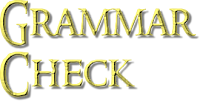Two Gentlemen of Verona
 |
| Watch this 1954 B& W Hindi Movie about a brother and his sister. The movie shows their relentless efforts and great fortitude to lead a life of self-respect. image credits: Wikipedia |
(Q & A)
Q1: What are the qualities of a gentleman?
Answer:
- Self-Respect
- Determined
- Dignified
- Compassionate
- Well-mannered
- Caring
- Hard-working
Q2: Based on your reading of the story answer the
following questions by ticking the correct
options.
(i) The driver did not approve of the narrator buying fruit from the two boys because:
(a) the boys were untidy and poorly dressed
(b) the strawberries were not fresh
(c) they were asking for a heavy price
(d) the driver did not approve of small boys who worked
Answer: (a) the boys were untidy and poorly dressed
(ii) The narrator was most impressed by the boys’:






















